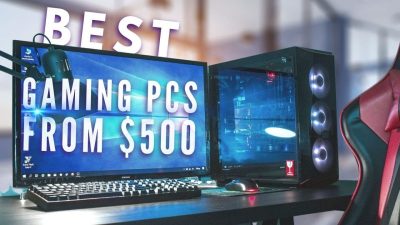📢 Disclosure: Some links on this page are affiliate links. As an Amazon Associate, I earn from qualifying purchases at no extra cost to you. Thanks for your support.
What’s better about these monitors?
Ultrawide monitors are becoming increasingly popular among users seeking a more immersive experience for both work and play. These best ultrawide monitors have an aspect ratio of 21:9 or higher, these monitors provide extra screen real estate, allowing for multiple windows to be open simultaneously. Gone are the days of combining two screens to achieve more space, these sleek, curved displays not only offer impressive width but also enhance immersion with their curvature, making them ideal for gaming, watching movies, and productivity tasks. In the list below, we focus on the best ultrawide monitors in the low to mid price range.
Why work on one?
Working on an ultrawide monitor feels like having all your tools laid out on a single, spacious table. But how do you pick the right one for your needs? In this article, we’ll walk you through the best budget ultrawide monitors currently available and the factors to consider when choosing one. But first it’s important to know some key factors and use cases.
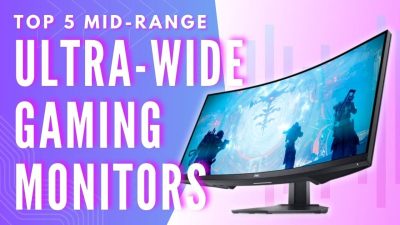
So, what are some great use cases?
Gaming and Entertainment
For gamers, ultrawide monitors transform how worlds look and feel. The expanded 21:9 or 32:9 aspect ratio offers a panoramic field of view that brings games closer to true peripheral vision. This is emphasised when playing in open worlds, racing, or piloting spacecraft games. The added horizontal space makes a difference for immersion, letting you see more of the environment without relying on camera panning. High refresh rates, as we mentioned above, combined with adaptive sync technologies like G-SYNC or FreeSync make motion smooth and responsive. Beyond gaming, movies and cinematic content shot in widescreen formats appear as directors intended, without black bars, delivering a true theater-like experience at your desk.
Productivity and Professional Workflows
Now, this can be a real game-changer for your work, ultrawides are productivity focused. To give you some examples, developers can keep code, browser windows, and documentation side by side without alt-tabbing. Video editors benefit from a wider timeline, and designers enjoy a larger canvas for layouts and previews. Spreadsheet users and analysts gain visibility into more columns at once, reducing scrolling and boosting focus.
And now many ultrawides include split-screen or Picture-by-Picture modes, effectively simulating two or more monitors while maintaining color consistency and minimal desk clutter. Below we’ll also look at how they stack up againt having multi-screen setups.
Key Factors to Consider When Buying an Ultrawide Monitor
Before diving into our top picks, it’s essential to understand the features that determine a monitor’s performance and suitability for your needs.
Refresh Rate
The refresh rate refers to how many times the screen updates its image per second. Measured in Hertz (Hz), a higher refresh rate reduces lag and ensures smoother visuals, especially important for gamers. For most gaming monitors, 144 Hz is considered the sweet spot. However, it’s important to know that the refresh rate is only as good as your computer’s capability to output frames per second (FPS). We’ll talk more about these in the limitations section below but to keep it short, a monitor with a high refresh rate won’t improve performance if your PC can’t keep up. Before purchasing, determine your PC’s FPS output and choose a monitor that matches or slightly exceeds it.
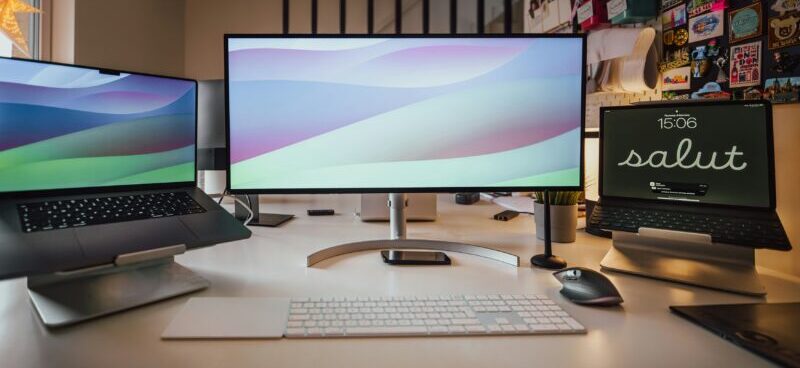
Other factors to consider: Resolution and panel type
Resolution impacts both image clarity and performance. Higher resolutions like 3440×1440 offer sharper visuals but can demand more from your GPU, potentially lowering FPS. For competitive online gaming, a lower resolution like 1080p might be preferable due to its lighter load on your system. However, larger screen sizes benefit from higher resolutions to avoid pixelation and maintain image quality.
The two main types of panels are VA (Vertical Alignment) and IPS (In-Plane Switching). VA panels offer better contrast and deeper blacks, while IPS panels deliver superior color accuracy and wider viewing angles. Your choice depends on whether you prioritize vibrant colors or higher contrast. Let’s now check out our list below.
Top 5 Ultrawide Monitors Comparison Table
| Monitor | Display | Refresh Rate | Response Time | Panel Type |
|---|---|---|---|---|
| Philips Evnia 34M2C8600 | 34-inch QD-OLED, 1440p | 175Hz | 0.03ms (claimed) | QD-OLED |
| iBuyPower SlateMesh | 34-inch, 1440p | 144Hz | 4ms | VA |
| Skytech Shiva | 34-inch, 1440p | 144Hz | 3ms | IPS |
| STG Aubron | 34-inch, 1080p | 120Hz | ~5ms | VA |
| Acer Predator Orion 3000 | 34-inch, 1440p | 144Hz | 1ms | IPS |
The Best Budget Ultrawide Monitors
1. Xiaomi Mi Curved 34-Inch Monitor
The Xiaomi Mi Curved 34-Inch Monitor delivers a fantastic mix of features at an affordable price.
Key Features:
- Refresh Rate: 144 Hz
- Resolution: 3440×1440
- Curvature: 1500R for a highly immersive experience
- Color Accuracy: 91% DCI-P3, 121% sRGB, DisplayHDR 400 certified
- Brightness: 300 nits
- Response Time: 4 ms
With support for FreeSync and G-SYNC, this monitor is suitable for gaming and professional work. While the response time isn’t the fastest (4 ms), it’s negligible for most users. The stand is minimalistic but bulky, so consider mounting it for more flexibility. At it’s price point, this is a great all-around choice.
2. Dell S3422DWG
The Dell S3422DWG is another excellent option, offering similar specs to the Xiaomi monitor with some added perks.
Key Features:
- Refresh Rate: 144 Hz
- Resolution: 3440×1440
- Curvature: 1800R (subtle curve)
- Brightness: HDR 400 certified with peak brightness of 520 nits
- Response Time: 2 ms
This monitor shines in bright rooms thanks to its high brightness and anti-reflective coating. However, it lacks local dimming for improved contrast and may experience flickering if FPS drops below 60. At this price point, it’s an incredible value.
3. Gigabyte M34WQ
For those who prefer flat screens, the Gigabyte M34WQ offers an IPS panel that stands out for its vibrant colors and fast response time.
Key Features:
- Refresh Rate: 144 Hz
- Resolution: 3440×1440
- Panel Type: IPS (better color accuracy)
- Brightness: 400 nits (advertised, but reportedly closer to 350 nits)
- Response Time: 1 ms
This monitor also includes a KVM switch for seamless switching between devices, making it ideal for multitaskers. While it lacks curvature, it’s a solid pick for those prioritizing color accuracy and flat displays.
4. Gigabyte G34WQC
For users seeking a curved display from Gigabyte, the G34WQC offers excellent specs at an affordable price.
Key Features:
- Refresh Rate: 144 Hz
- Resolution: 3440×1440
- Curvature: 1500R for an immersive experience
- Panel Type: VA
For the value, this monitor offers impressive contrast and immersive visuals. While ghosting may occur due to its VA panel, it’s a minor drawback for most users.
5. Alienware AW3423DWF
Although slightly above the budget range, the Alienware AW3423DWF is worth mentioning for those seeking next-level performance. It’s a 34-inch QD-OLED monitor with cutting-edge features.
Key Features:
- Refresh Rate: 165 Hz
- Resolution: 3440×1440
- Panel Type: QD-OLED (superior brightness, contrast, and response time)
- HDR: HDR 1000 certified
This monitor offers near-perfect black levels, stunning SDR and HDR performance, and vibrant colors. However, its higher price and risk of burn-in with static images may deter some users.
Our top pick!
For budget-conscious buyers, the Dell S3422DWG stands out as the best value option, offering great brightness, solid performance, and usability. However, every monitor on this list caters to specific needs, whether it’s color accuracy, flat vs. curved displays, or advanced features like QD-OLED panels.
Why choose ultrawide over dual monitors?
So, to answer our previous question earlier, ultrawide monitors are steadily replacing the traditional dual-monitor setup for many users who want both productivity and simplicity. Instead of managing two separate displays, with mismatched colors, bezels breaking up your workspace, and cable clutter, an ultrawide offers a seamless, uninterrupted canvas.
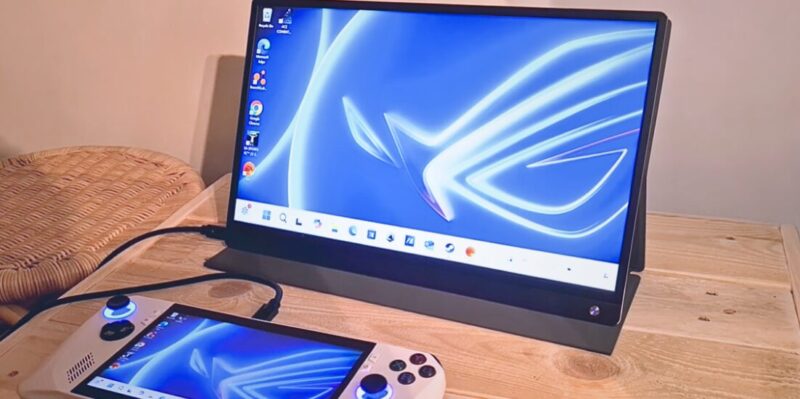
However, if you have a portable monitor, that can be a different story. Portable monitors have their benefits, the big one is that they’re travel friendly. You can easily fit a portable display in your backpack or carry case and take it anywhere. Unlike an untrawide, which you probably won’t want to move around at all. Portable monitors and laptop extenders are great for extending your laptops screen space, or connecting up your steamdeck and any other handheld device, too. You can read more about our list of best portable monitors and laptop screen extenders here.
But for performance, clarity and immersion, they can’t compare to regular monitors and ultrawides. If you’re deciding between two regular monitors or an ultrawide, we think the single-screen approach improves immersion for gaming and creativity while reducing distractions and calibration hassles. It also eliminates the micro-lag and window-snapping quirks that come from dragging apps across multiple displays. With modern ultrawides supporting resolutions like 3440×1440 and above, you can enjoy the same (or more) screen real estate as two monitors, but with a cleaner desk, more accurate color uniformity, and a sleek aesthetic that fits both home and office environments.
But it’s not all perfect, there are some pitfalls
Despite their advantages, ultrawide monitors come with a few caveats worth knowing before you buy. The higher resolutions demand more from your GPU, especially at 144 Hz or higher refresh rates, so budget systems may struggle to maintain smooth performance. It’s important to know your computers specs to see if you can make use of the features within the ultrawide you go for.
Also, some older games and applications still don’t support ultrawide resolutions natively, leading to stretched visuals or black bars. Large curved screens can distort straight lines at the edges, which might bother users working with precise layouts. Desk space is another concern; many ultrawides require deeper or wider surfaces to sit at a comfortable viewing distance. And for the OLED models, potential burn-in and higher price tags remain considerations. Understanding these tradeoffs will help to ensure you get the right monitor for your needs rather than being swayed by specs alone.
Smart Glasses and VR Options
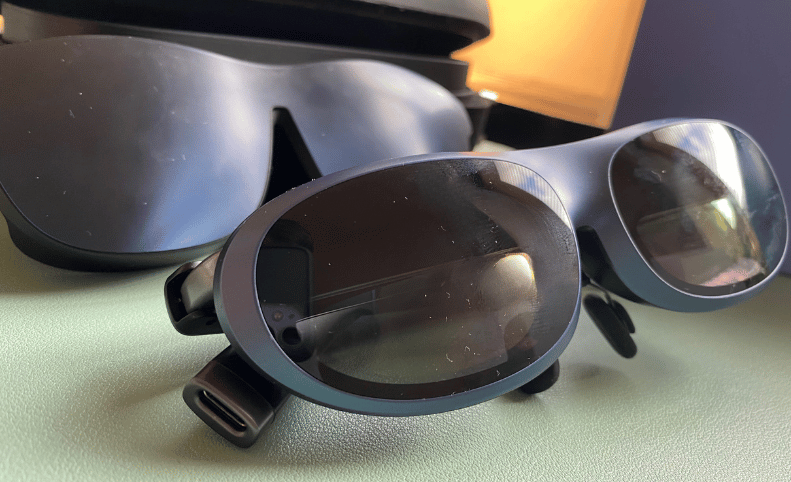
If you’re into AR glasses and VR headsets, they offer some very interesting ways in which you can expand your screens. You could say they’re redefining what “workspace” means. Smart glasses such as the Rokid Max or Xreal Pro project multiple virtual screens into your field of view, mimicking the experience of a giant monitor without physical hardware. When I tried it on the Rokid Max I was really impressed. However, I did notice that it was difficult to type on my laptop while viewing the screen. So, there are definitely alot of areas where they need improvement.
Similarly, VR platforms like the Meta Quest 3 create immersive 3D environments where virtual monitors can float around your workspace, customizable in size and distance. We tried using the Immersive App on the Quest 3 and it was very impressive. It takes it steps further than smartglasses currently can, through the features and usability. For example, you can change your setting so as you look around, you could be in a cabin above a snowy mountain. The controllers add to usability as well, allowing you to navigate using the pointer.
But these devices are though not replacements for ultrawides, they can suffer from limited resolution, comfort issues, and compatibility problems. For now, we think ultrawide monitors remain the most practical bridge between immersive visuals and day-to-day productivity for your PC.
Thanks for reading! Oh and if looking for a gaming laptop? Try our Laptop Finder Quiz and be matched with instant recommendations.
We hope this article for best ultrawide monitors helped you find the right one. Check out our other related articles on the links below.
